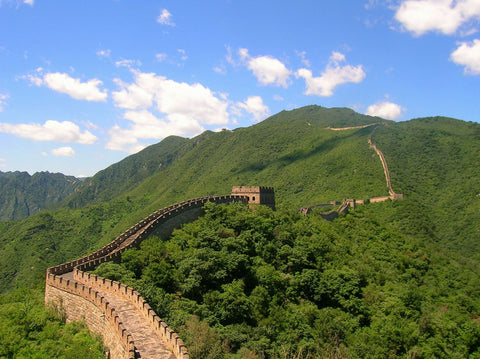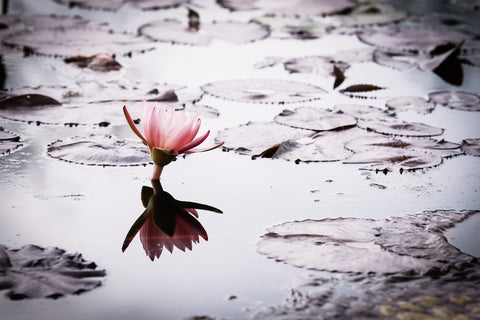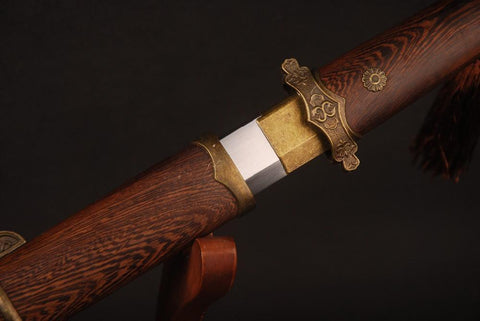One of the most famous leaders of all time, Genghis Khan led the Mongols on a conquest that would eventually form the largest contiguous empire in human history. All was not power and roses however, as he came from quite humble beginnings.

A Child Groom
There is not much known about Genghis’s early life, though legends abound due to his later prominence. What is known is that he was born Temüjin, one of at least seven siblings. At the tender age of nine, his father arranged a marriage for him and took him to live with his bride’s family, a political ally, until he reached the marriageable age of twelve years.
However, this questionably happy state of affairs was not to last, for, on the way home, his father met some enemies who poisoned him. Learning of this, the future conqueror left his bride-to-be and went home to his tribe in order to claim his father’s place as chief. The tribe rejected him, however, and he was forced with his family to flee and live of the land alone.
Temüjin had an older half-brother Begter who began to seek power as he reached adulthood, and he planned to take Temüjin’s mother (not his own mother) as his wife. Temüjin resented Begter for this, and on a hunting excursion with his other brother Khasar, they killed Begter.
A Rising Star
Temüjin’s mother reportedly was a wise woman, who taught him about the need for political stability among the then-divided nomadic tribes of today’s Mongolia. This teaching combined with the harsh life of the open plains began to prepare Temüjin for his future role.
Temüjin’s reputation began to increase when he was captured in a raid and later escaped. He eventually managed to complete the marriage his father had arranged, cementing the political alliance between the two tribes. His wife Börte was soon captured herself and given away to another man. Temüjin managed to rescue her with the help of his closest friend Jamukha and the soldiers of an ally. This capture would have historic repercussions, as Börte gave birth to a son nine months later, making it unclear who the father was. This would later complicate the matter of succession for the empire.
While Genghis followed the tradition of taking multiple partners, only Börte and her children received any rights of inheritance. She bore him three more sons who would eventually become rulers in their own rights.
Two Paths Divided, One Chosen
Temüjin and Jamukha had each become Khan of their own tribes. Childhood friends, they had taken an oath to remain faithful to each other all their lives as blood brothers. However, their differences in governing philosophies began to cause a rift in their friendship. Temüjin favored a meritocratic method, and as such his ranks were filled with people of all classes. Jamukha followed the traditional path of aristocracy. When Temüjin was eventually elected as Khan of the Mongols, Jamukha successfully attacked him, driving him into a sort of exile.
The historical records become unclear for the next decade, but eventually Temüjin was restored to power when he took part in an attack against people that had been oppressing his fellow tribesman. Temüjin continued to gain power by marriage, this time marrying his son to a daughter of Toghrul, an ally. However, Toghruls’s and Temüjin’s relationship was rocky at best, with Toghruls’s son Senggum unsuccessfully attacking Temüjin, and Toghrul refusing to give his daughter in marriage. This refusal led to war, with Toghrul teaming up with Jamukha against Temüjin. However due to previous atrocities committed by Jamukha, many soldiers deserted to Temüjin. This, combined with disagreements between Jamukha and Toghrul, led to their eventually defeat. Jamukha escaped to the Naimans, who eventually elected him leader. This caused another showdown with Temüjin ending in Jamukha’s defeat due to more desertions. This defeat made Temüjin the sole ruler of the Mongols, and he took the name Genghis Khan.
The Mongol Empire
With the clans united, Genghis began planning his empire. His first step was to invade the lands to the south. Correctly surmising that the Xia would not be aided by the ruler of what is now northern China, Genghis attacked. Though the conquest was successful, it was a hard one due to the Xia’s defenses.

With the south quelled, Genghis turned his attention to the east, to the Jin who had not defended the Xia in their time of need. Noting the threat Genghis now posed, the Jin assembled their forces. However, due to a messenger’s defection, they lost the tactical advantage against Genghis and were defeated in a slaughter. This forced the ruler of the Jin to abandon modern Beijing and essential surrender the northern half of his realm to the Mongols. Two decades later, the remainder fell to the Mongols.
The Mongols were tired after nearly a decade of fighting, so Genghis chose only a few soldiers to strike west. Using nefarious tactics, they managed to weaken the Qara Khitai before attacking directly and securing the Victory. Continuing west, they managed to secure territory all the way to the Caspian Sea.
The empire kept expanding, eventually reaching India to the south, Iran to the west, Russia to the north, and Korea to the East.
Succession and Death
Genghis managed to live to old age. However, the closer he got to death, the more troubled the empire became over who would succeed him. While, traditionally, his son Jochi should succeed, the question of his parentage and the refusal of one of Genghis’s sons Chagatai to support Jochi should he be named the successor made this choice untenable. Because of this refusal, Chagatai was also disconsidered, so Genghis chose his third son Ögedei as his successor.
In order to further ease tensions, Genghis divided his empire into four Khanates and gave each to one of his sons. Jochi’s early death meant his Khanate was given to his two sons. When Genghis died, according to the custom of the time, he was buried in an unmarked grave.
Ögedei continued expanding the empire after his father’s death, with the Mongol Empire eventually covering all modern-day China, as well as reaching Eastern Europe.
The Sword Behind the Man.
While it is uncertain exactly what weapon Genghis would have used on the battlefield, the Mongols used a type of slashing sword heavily related to the Chinese Dao. As their empire expanded, they adopted Persian weapons such as the Scimitar.
source https://www.bladespro.co.uk/blogs/news/genghis-khan




